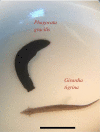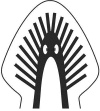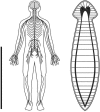The brain: a concept in flux
- PMID: 31006364
- PMCID: PMC6553595
- DOI: 10.1098/rstb.2018.0383
The brain: a concept in flux
Abstract
One of the most important aspects of the scientific endeavour is the definition of specific concepts as precisely as possible. However, it is also important not to lose sight of two facts: (i) we divide the study of nature into manageable parts in order to better understand it owing to our limited cognitive capacities and (ii) definitions are inherently arbitrary and heavily influenced by cultural norms, language, the current political climate, and even personal preferences, among many other factors. As a consequence of these facts, clear-cut definitions, despite their evident importance, are oftentimes quite difficult to formulate. One of the most illustrative examples about the difficulty of articulating precise scientific definitions is trying to define the concept of a brain. Even though the current thinking about the brain is beginning to take into account a variety of organisms, a vertebrocentric bias still tends to dominate the scientific discourse about this concept. Here I will briefly explore the evolution of our 'thoughts about the brain', highlighting the difficulty of constructing a universally (or even a generally) accepted formal definition of it and using planarians as one of the earliest examples of organisms proposed to possess a 'traditional', vertebrate-style brain. I also suggest that the time is right to attempt to expand our view of what a brain is, going beyond exclusively structural and taxa-specific criteria. Thus, I propose a classification that could represent a starting point in an effort to expand our current definitions of the brain, hopefully to help initiate conversations leading to changes of perspective on how we think about this concept. This article is part of the theme issue 'Liquid brains, solid brains: How distributed cognitive architectures process information'.
Keywords: brain; invertebrates; nervous system; planaria; plants; vertebrates.
Conflict of interest statement
I declare that I have no competing interests.
Figures





Similar articles
-
Rules to be adopted for publishing a scientific paper.Ann Ital Chir. 2016;87:1-3. Ann Ital Chir. 2016. PMID: 28474609
-
Homeostasis as a fundamental principle for a coherent theory of brains.Philos Trans R Soc Lond B Biol Sci. 2019 Jun 10;374(1774):20180373. doi: 10.1098/rstb.2018.0373. Philos Trans R Soc Lond B Biol Sci. 2019. PMID: 31006365 Free PMC article.
-
Regarding: Rosenthal DI, Glatstein E. "We've Got a Treatment, but What's the Disease?" The Oncologist 1996;1.Oncologist. 1997;2(1):59-61. Oncologist. 1997. PMID: 10388030
-
The use of planarians to dissect the molecular basis of metazoan regeneration.Wound Repair Regen. 1998 Jul-Aug;6(4):413-20. doi: 10.1046/j.1524-475x.1998.60418.x. Wound Repair Regen. 1998. PMID: 9824561 Review.
-
Primary transcripts: From the discovery of RNA processing to current concepts of gene expression - Review.Exp Cell Res. 2018 Dec 15;373(1-2):1-33. doi: 10.1016/j.yexcr.2018.09.011. Epub 2018 Sep 26. Exp Cell Res. 2018. PMID: 30266658 Review.
Cited by
-
Identification of Alternative Splicing and LncRNA Genes in Brain Tissues of Fetal Mice at Different Developmental Stages.Comb Chem High Throughput Screen. 2023;26(1):58-82. doi: 10.2174/1386207325666220408091206. Comb Chem High Throughput Screen. 2023. PMID: 35400338
-
Codepoietic Generation of Meaningful Information in the Evolving Biosphere.Entropy (Basel). 2025 Jun 24;27(7):672. doi: 10.3390/e27070672. Entropy (Basel). 2025. PMID: 40724389 Free PMC article.
-
Evidence of anticipatory immune and hormonal responses to predation risk in an echinoderm.Sci Rep. 2021 May 21;11(1):10691. doi: 10.1038/s41598-021-89805-0. Sci Rep. 2021. PMID: 34021182 Free PMC article.
-
Liquid brains, solid brains.Philos Trans R Soc Lond B Biol Sci. 2019 Jun 10;374(1774):20190040. doi: 10.1098/rstb.2019.0040. Philos Trans R Soc Lond B Biol Sci. 2019. PMID: 31006374 Free PMC article.
-
On the emergence of cognition: from catalytic closure to neuroglial closure.J Biol Phys. 2020 Mar;46(1):95-119. doi: 10.1007/s10867-020-09543-8. Epub 2020 Mar 4. J Biol Phys. 2020. PMID: 32130568 Free PMC article.
References
-
- Walker A, Laws E. 1998. The genesis of neuroscience. Park Ridge, IL: The American Association of Neurological Surgeons.
-
- Pagán OR. 2014. The first brain: the neuroscience of planarians. New York, NY: Oxford University Press.
Publication types
MeSH terms
LinkOut - more resources
Full Text Sources
Research Materials

